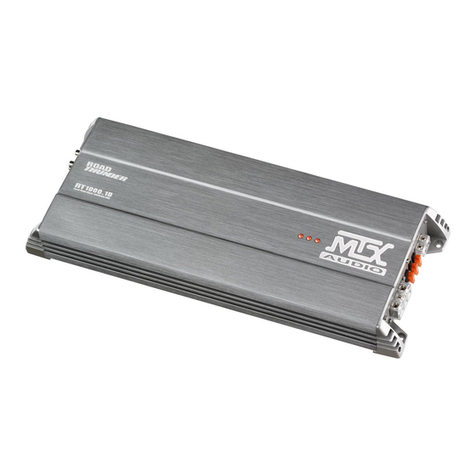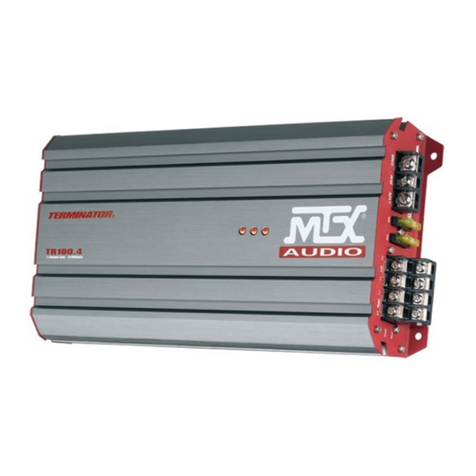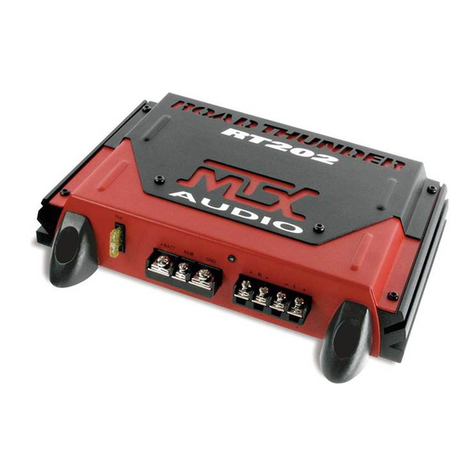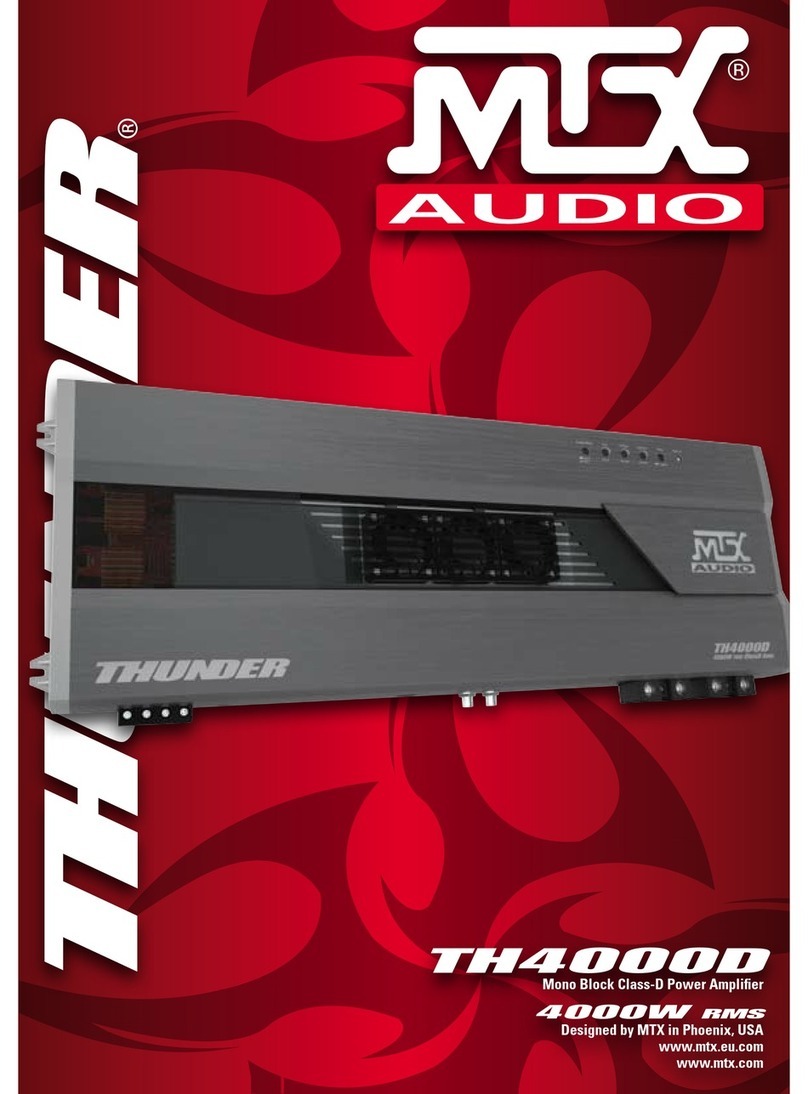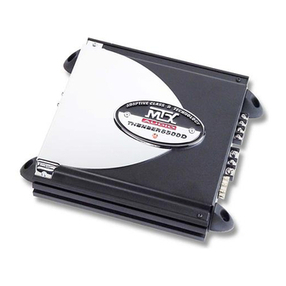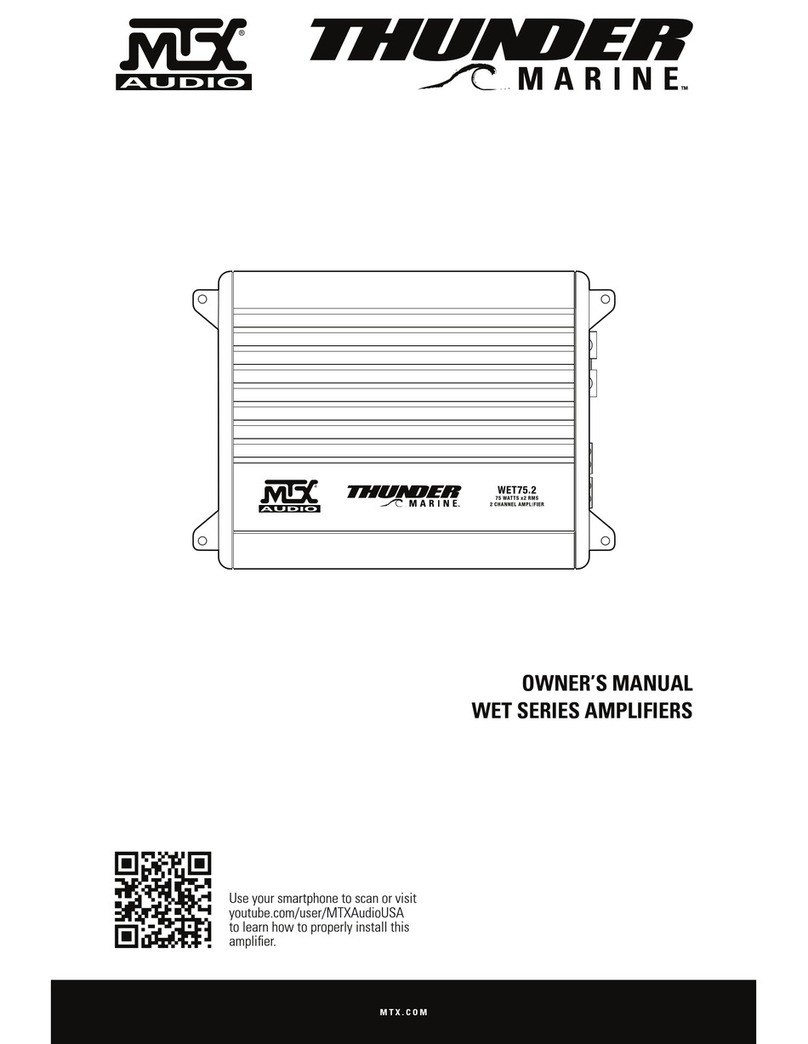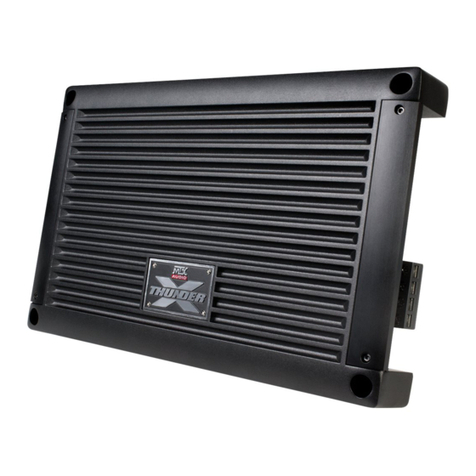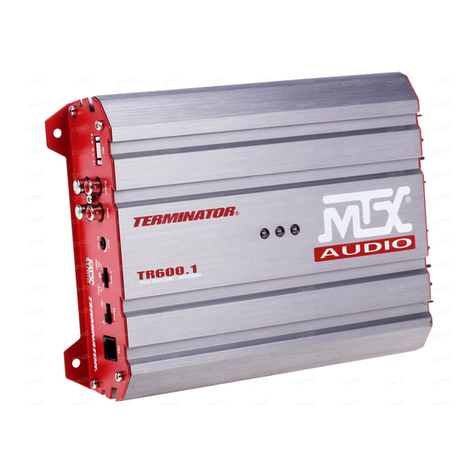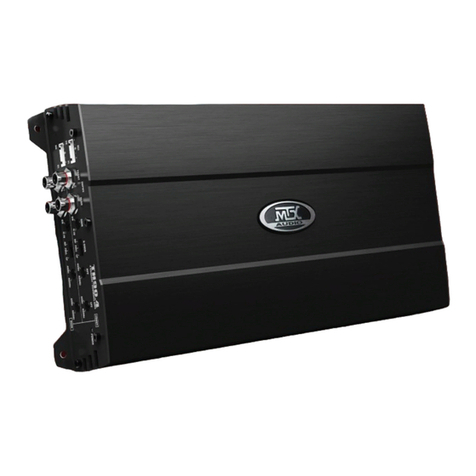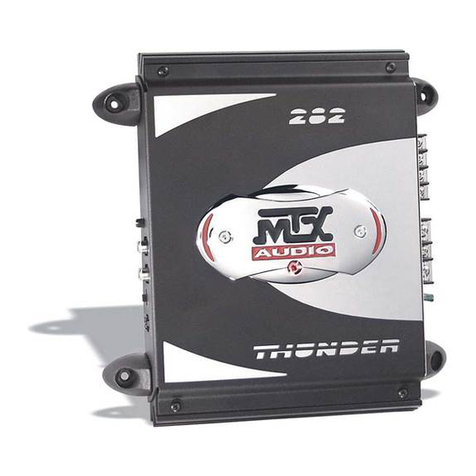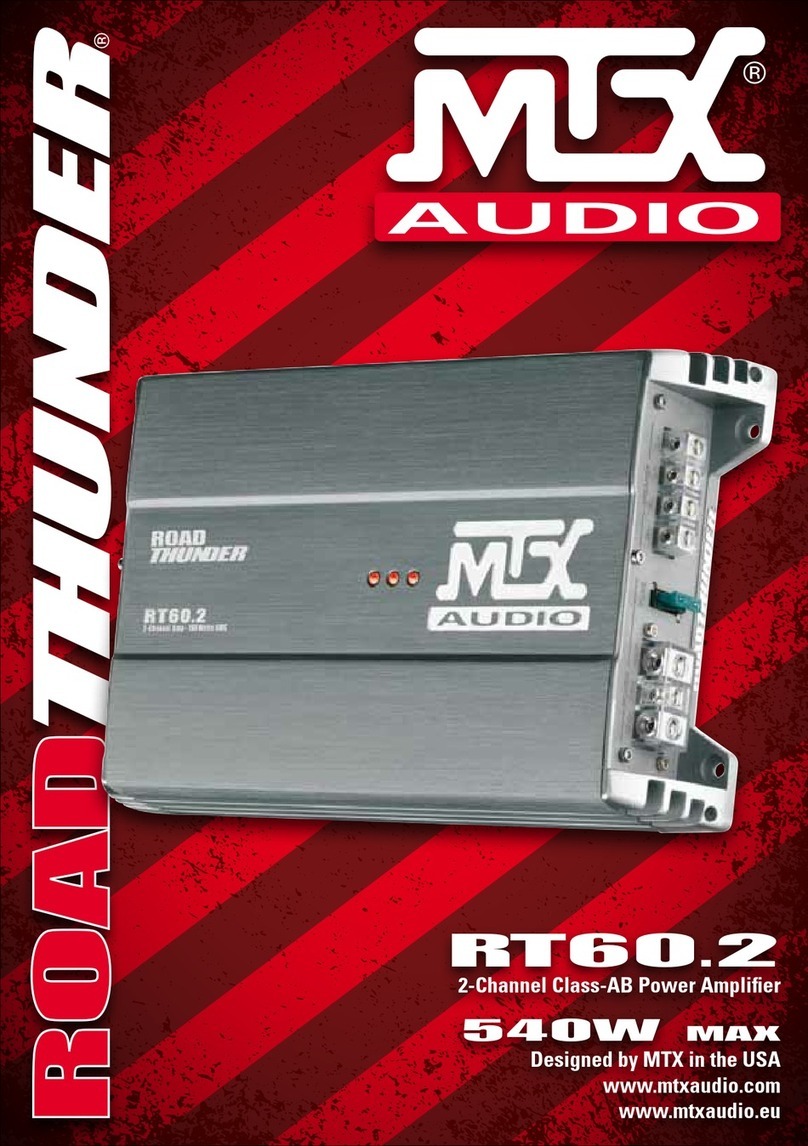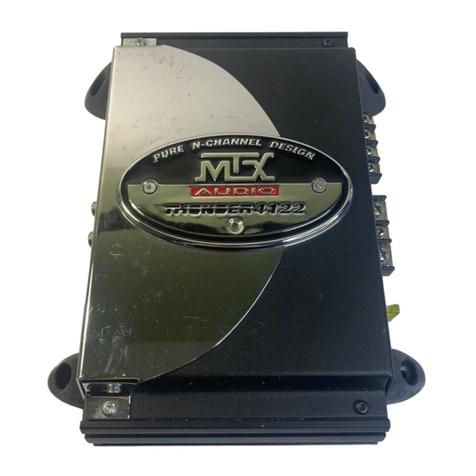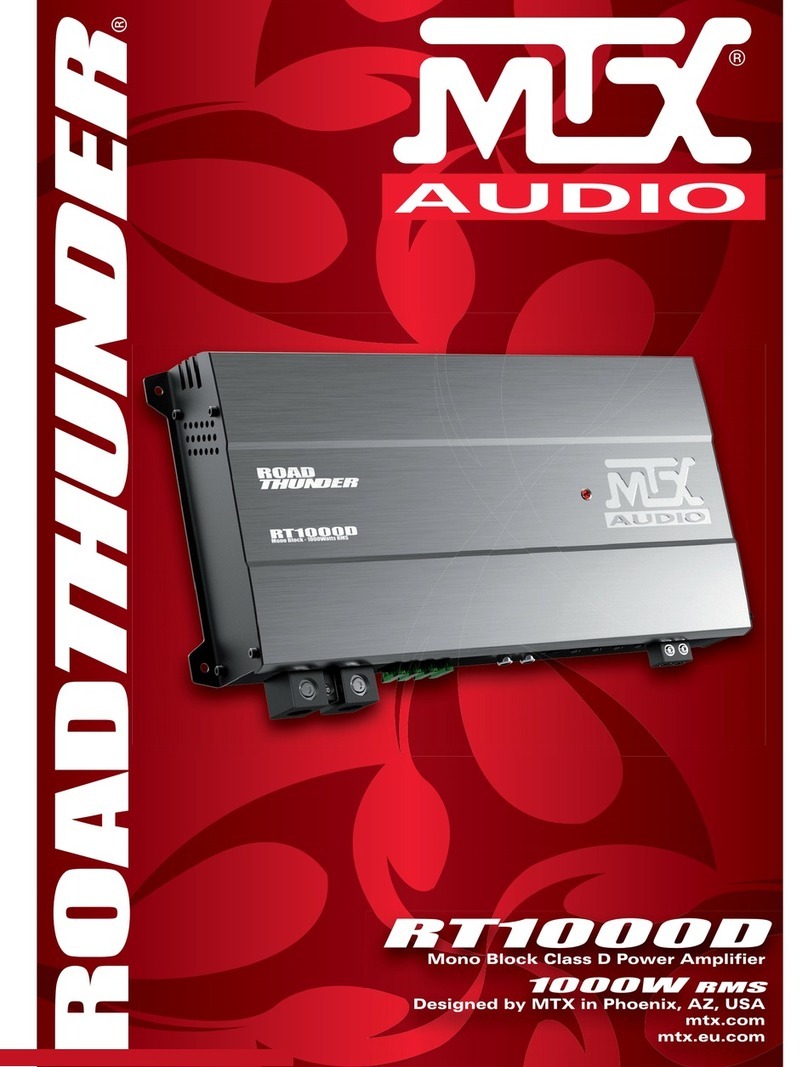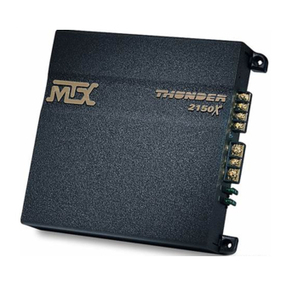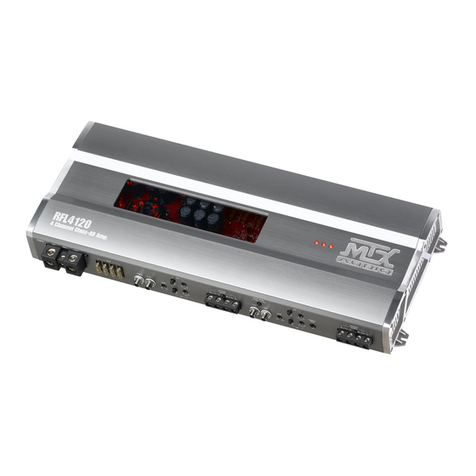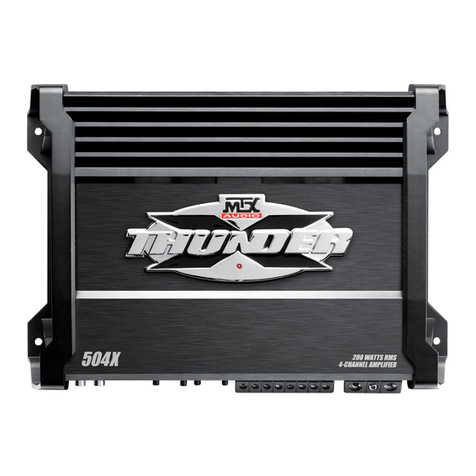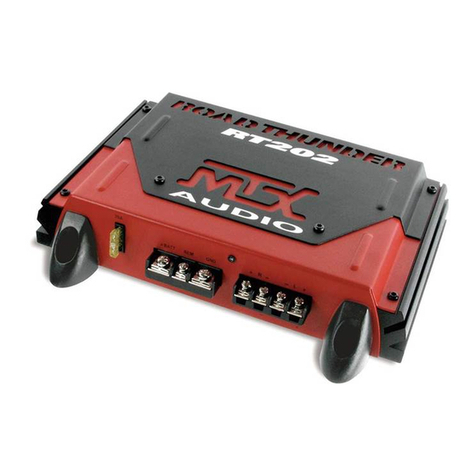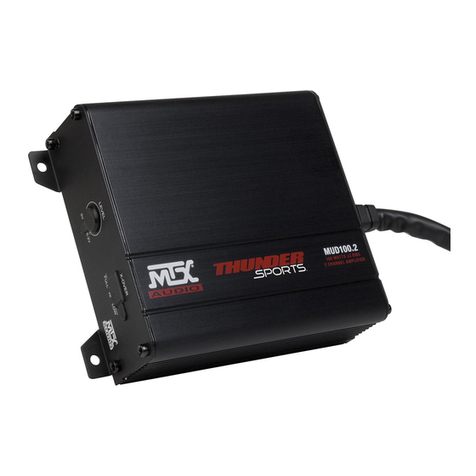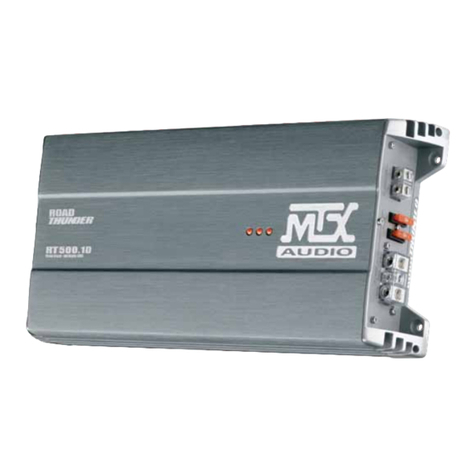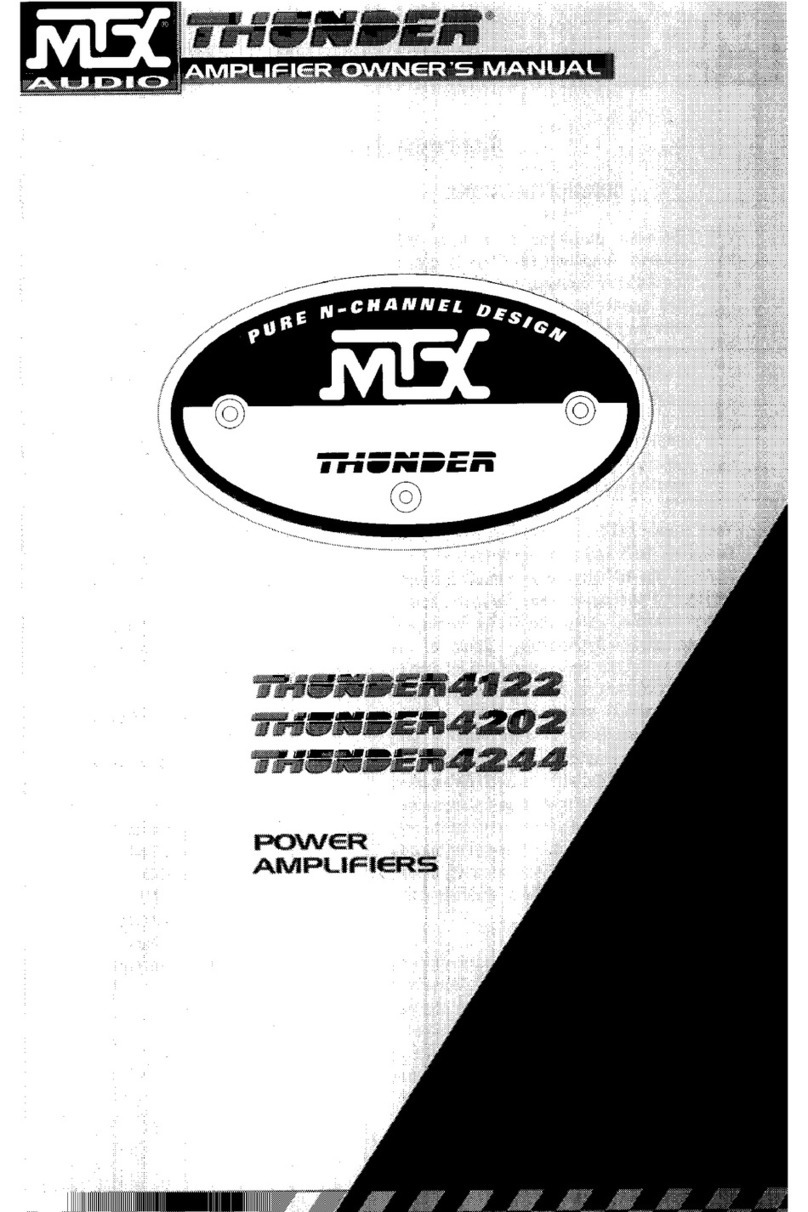INTRODUCTION
CONGRATULATIONS...
on your purchase of a new 2-Channel MTX Audio amplifier! MTX is one of the inventors of
mobile audio, having designed the first-ever in-vehicle enclosed subwoofer system in the early
80’s. Our award-winning heritage speaks for itself, 14 Innovations Design and
Engineering Awards, more than 80 AutoSound Grand Prix Product of the Year Awards, more
than 500 World Records or 1st Place Finishes in Sound Competitions. Also, MTX is the first
USA audio Company to be awarded ISO9001 quality assurance certification.. MTX manufac-
turing methods are world-class, with more than 1,000,000 square feet of dedicated manufac-
turing facilities, using State-of-the-Art Intelligent Surface Mount, Rotational Molding, Robotic
Assembly and CNC manufacturing equipment. What all this means to you, the music and
audio fan, is that you couldn’t have chosen a more reliable, powerful, or better performing
amplifier. The Audio Performance Dyno Certificate is your proof. Your amp will meet or exceed
its rated spec, or it doesn’t ship. No compromises, no excuses.
All power ratings are not created equal. CEA 2006 Compliance ensures that the power of
this amplifier is measured according to strict standards dictated by the Consumer Electronics
Association.
We want to ensure you get continuous high performance from your MTX amplifier, so we
recommend that you have it professionally installed by your authorized MTX dealer.
If you are installing this amplifier yourself, we recommend that you read the manual cover-to-
cover before you install it. Familiarize yourself with the features and details on the input and
output panels. Make sure you have all the equipment you need. Then follow the step-by-step
installation instructions included.
If you have any questions, call us at 800-CALL MTX, or use our live help at
www.mtx.com
MTX Audio
4545 E. Baseline Rd. Phoenix, AZ 85042
Please take a moment to register your purchase online at mtx.com. Please also record the
serial number of your amplifier in the space provided below and keep this manual for future
reference, as well as your sales receipt as proof of ownership. (The serial number
of your amplifier is marked on the bottom of its metal chassis.)
Serial Number:
Date of Purchase:
